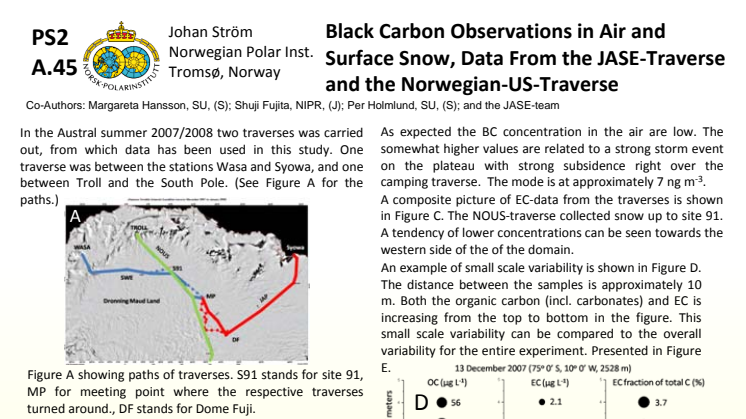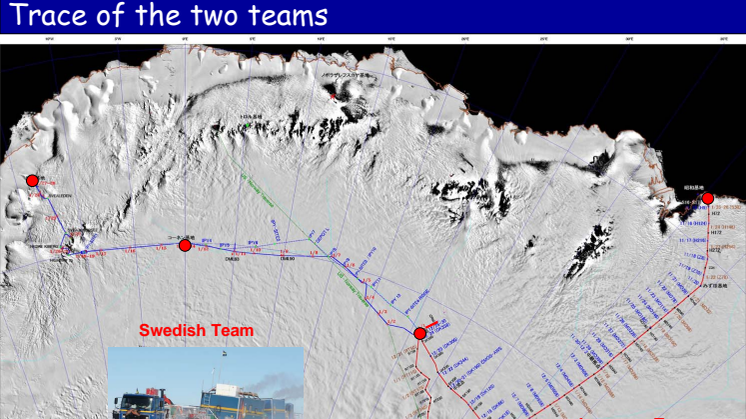Pressmeddelande -
Antarctic expedition reveals new information on inland ice layers that may help predict the future of the frozen continent
The first data from the Japanese-Swedish glaciological traverse JASE in 2007/08 is presented at the International Polar Year Oslo Science Conference that gathers more than 2 000 polar scientists.
Dr Shuji Fujita from the National Institute of Polar Research in Japan made a presentation about the JASE-expedition, a joint Japanese-Swedish operation in the first Antarctic Season of the International Polar Year (IPY) 2007/08. The science team carried out studies in an area where previous drilled ice cores have been taken, that gave valuable information about the climate. The traverse was done with tracked vehicles and connected the stations Syowa (Japan) and Wasa (Sweden), via the stations Kohnen (Germany) and Dome Fuji (Japan). The Antarctic ice sheet is the largest inland ice on Earth and its past and present development is one of the most important factors for issues like climate change and sea level rise.
Many different types of data were collected along the route, such as aerosols and surface snow sampling as well as snow radar and depth soundings, but within four specific projects the scientists can present all new results:
- Radar studies of internal layers in the inland ice show layers 70 000 years back in time. This gives new knowledge about the original development of the ice and changes in accumulation, which is valuable while calculating how the mass balance of the ice might move and develop in the future. (Abstract: http://ipy-osc.no/abstract/382388)
- The radar studies also gave way to the discovery of new subglacial lakes in the area. These lakes have probably formed after the ice sheet, and most likely consist of melted ice water. In contrast to some other subglacial lakes in Antarctica, there is no reason to believe that these lakes contain organisms, but their existence helps us to understand the formation and development of the ice sheet and the shaping of the subglacial landscape.
- The study of black carbon (BC) particles in snow during the expedition revealed relatively high BC concentrations, that also may be indicative of very long-range transport at high altitude. This study also gave new and important data points in Antarctica where carbon has been sparsely measured, and hence increases the existing knowledge substantially. (Abstract: http://ipy-osc.no/abstract/385563)
- The distribution and variation in size of snow grains affect the interpretation of satellite images for ice sheet accumulation. A new method for determining grain size and shape parameters based on image processing techniques was developed during the JASE-expedition. (Abstract: http://ipy-osc.no/abstract/383116)
Press images available at: http://www.mynewsdesk.com/se/pressroom/polarforskningssekretariatet
Download a folder about the expedition: http://www.polar.se/expeditioner/swedarp2007_08/travers0708_broschyr.pdf
For more information, please contact:
Per Holmlund, Professor in glaciology at Stockholm University and Swedish project leader: +46 702 677 836 or per.holmlund@natgeo.su.se.
Sofia Rickberg, Information Officer at Swedish Polar Research Secretariat, present at the IPY Oslo Science Conference: +46 70 344 92 65 or sofia.rickberg@polar.se.
Ämnen
- Miljö, energi
Kategorier
- kol
- snö
- subglacial
- snow
- particle
- carbon
- iskärna
- ice core
- bandvagn
- climate change
- antarctica
- polar research
- sweden
- japan
- antarktis
- polarforskning


